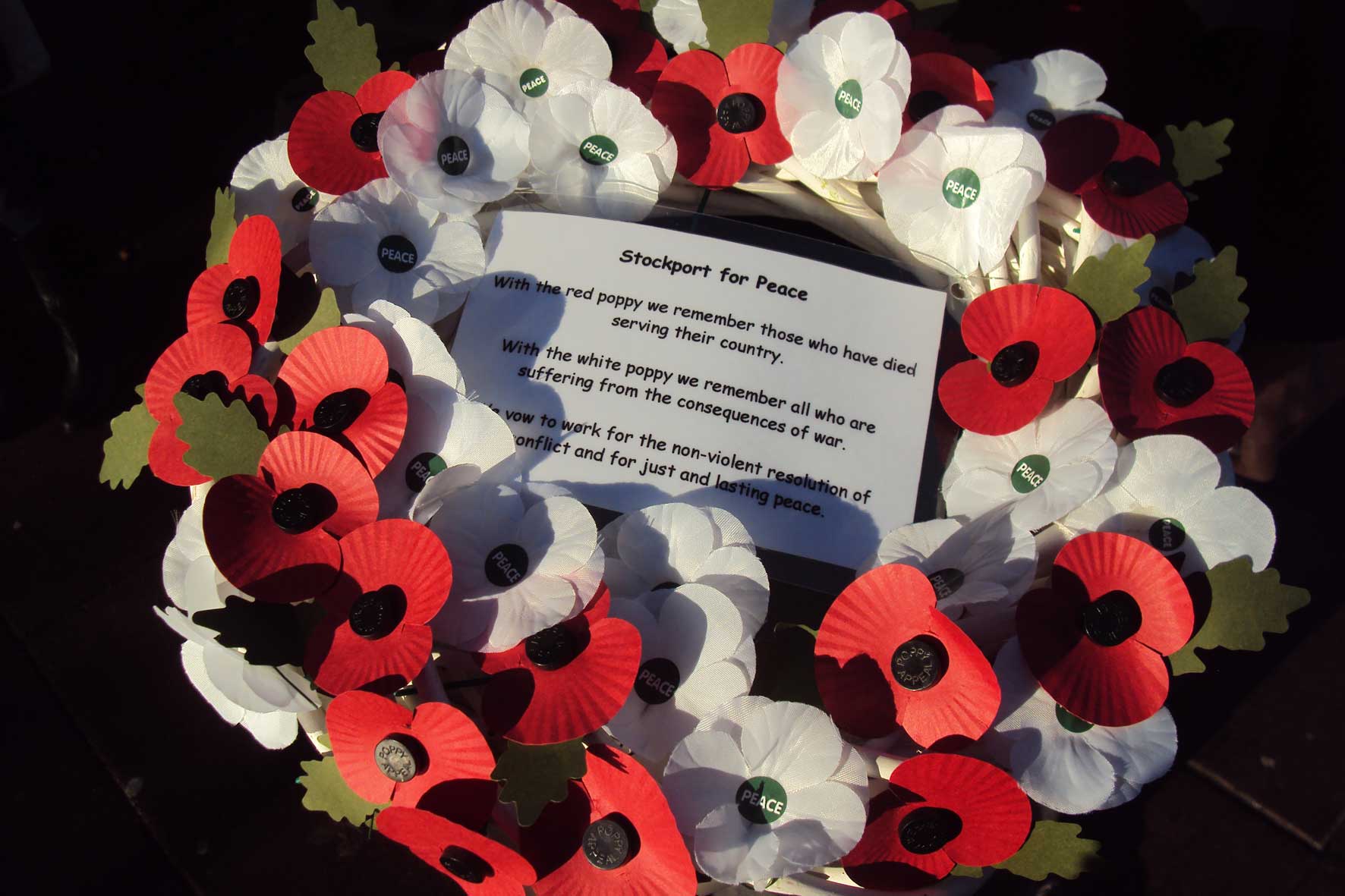






 |
 |
 |
 |
 |
 |
 |
 |
Stockport for Peace - World War One |
 |
 |
Members of Stockport for Peace laid a wreath of red |
 |
White Poppies Are For Peace
The idea of decoupling Armistice Day, the red poppy and later Remembrance Day from their military culture dates back to 1926, just a few years after the British Legion was persuaded to try using the red poppy as a fundraising tool in Britain.
A member of the No More War Movement suggested that the British Legion should be asked to imprint 'No More War' in the centre of the red poppies instead of Haig Fund and, failing this, pacifists should make their own flowers.
The details of any discussion with the British Legion are unknown but as the centre of the red poppy displayed the Haig Fund imprint until 1994 it was clearly not successful.
A few years later the idea was again discussed by the
Co-operative Women's Guild. In 1933 the first white poppies appeared on Armistice Day (called Remembrance Day after World War Two).
The white poppy was not intended as an insult to those who died in the First World War - a war in which many of the white poppy supporters lost husbands, brothers, sons and lovers - but a challenge to the continuing drive to war.
The following year the newly founded Peace Pledge Union began widespread distribution of the poppies and their annual promotion.
Cyril Pearce, our speaker on November 14th, 2013
He is a retired senior lecturer, and currently a visiting research fellow at Leeds University, working on the Legacies of War project.
He is the author of "Comrades in Conscience" about a community's opposition to the Great War. It is a detailed exploration of the anti-war movement in his home town of Huddersfield. This book was well received, and had a favourable review in the Guardian.
Since then he has extended his work to create an exhaustive national database of British conscientious objectors. Now the Pearce CO Register, has been incorporated in the Imperial War Museums Lives of the First World War digital platform.
It is also the basis for his new book, "Communities of Resistance: Patterns of Dissent in First World War Britain", to be published in 2014.